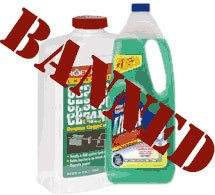Stop Wasting Your Money on Septic Chemicals and Additives!
The Truth About Bacterial Septic Tank Additives
The Truth About Bacterial Septic Tank Additives
There are over 1,200 bacterial Septic tank additives on the market that introduce bacteria into the system. The premise is that the septic tank needs more bacteria. Nothing could be further from the truth! Every time a toilet is flushed about 1 trillion bacterium are introduced into the septic tank. In an aerobic environment this bacteria can double in population every 20 minutes. Simply speaking, the addition of an ounce or two of a bacteria septic tank additive each month will have no effect whatsoever on the function of the septic tank or drain field system . Bacterial septic tank additive products are a mere placebo for the homeowners that use them. The ineffectiveness of bacterial septic tank additives has been independently studied and published by multiple industry experts.
Additives Don’t Work – Journal of Environmental Heath
Septic Tank Additives – Kansas State
Septic System Additives – Purdue University
The reason that the forced introduction of bacteria by using a septic tank additive has no effect on the function of the septic system is fundamental in nature. The bacteria population increases and decreases relative to the amount of organic waste in the septic tank. When a home is vacated for a week the bacteria devour the waste until it is minimized. Because of the lack of food the bacteria population drops off to a sustainable level. When the home is re-occupied the bacteria population explodes rapidly because of the abundant food source it receives. Once the bacteria catch up digesting the organic waste they will then drop back down to a sustainable level. This happens in nature all of the time. Mother nature always finds a balance.
Specifics of Canadian Ban of Septic System Additives
*See “Manual of Policy, Procedures, and Guidelines for Onsite Sewage Systems,” referring to Ontario Regulation 374/81 under part VII of the Environmental Protection Act, ISBN 0-7743-7303-2. septic-additives
* Paragraph 3(f)(iii): Some 1200 products, many containing enzymes, have been placed on the market for use in septic tanks, and extravagant claims have been made for some of them. As far as is known, none has been proved advantageous in properly controlled tests.
* Paragraph 3(f)(i) Chemicals: “The function of a septic tank is not improved by the addition of disinfectants or other chemicals. In general, the additary products which are claimed to “clean” septic tanks contain sodium hydroxide or potassium hydroxide as the active agent. Such compounds may result in sludge bulking and a large increase in alkalinity, and may interfere with digestion. The resulting effluent may severely damage the soil structure and cause accelerated clogging, even though some temporary relief may be experienced immediately after application of the product.”

